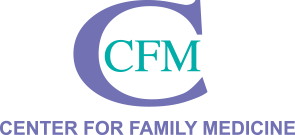May is Mental Health Awareness Month

May is Mental Health Awareness Month. It’s a time to dedicate promoting the understanding as well as discussing and sharing personal experiences revolving around mental health. Nearly 1 in 5 U.S. adults experience mental illness each year. Knowing these numbers, it’s imperative we take the opportunity for education and discussion. We have the chance to support each other by breaking the stigma, utilizing local and federal resources, and better recognizing the signs and symptoms.
What is Mental Health?
Mental health refers to someone’s emotional, psychological, and social well-being and includes factors such as our emotional state, cognitive functions, behavioral patterns, and social interactions. Individuals experience various degrees of well-being, with people at one end of the spectrum having conditions such as depression, anxiety, or schizophrenia: conditions that can significantly impact daily life and cause distress or impairment. On the other end are those who are mentally healthy and can cope with all of life’s unpredictable challenges. They have an easier time finding healthy coping mechanisms and positive emotions, and can maintain supportive relationships.
What is the Stigma Surrounding Mental Health?
There has long been a stigma surrounding mental health. This includes negative, judgmental, and discriminatory attitudes toward those who are living with certain conditions. It can show up in several ways:
● Social Stigma – the attitude that mental health challenges are a sign of personal failure or weakness.
● Self-Stigma – when someone has a negative perception of themselves because of their mental health.
● Structural Stigma – involves institutional policies, practices, and systems that discriminate against those with mental health conditions, such as employment discrimination and barriers to healthcare access.
Mental Health Awareness Month focuses on breaking these stigmas by educating everyone on mental health, being respectful, and encouraging open conversation.
Finding Resources
It is essential for everyone to have the support they need, and there are many local organizations that can help. Therapists and counselors, as well as community support groups, can provide much-needed guidance. It is important for anyone who needs help to know that there are people who understand, and that sharing their experiences can be therapeutic.
The South Dakota Department of Health offers online information about mental health. Observing Mental Health Awareness Month is a great time to review the resources available in the state, and seek further guidance from the DOH as needed.
The Substance Abuse and Mental Health Services Administration (SAMHSA) offers a toolkit for Mental Health Awareness Month. The toolkit includes printables, social media graphics, and general education that can be used in the home, workplace or school.
Recognizing Signs and Symptoms
Mental health issues manifest in different ways. Knowing what to look for is key. Pay attention to changes in mood and behavior, such as sudden, drastic mood swings. Keep in mind that mental and physical health are linked, as anxiety, for example, can show itself through physical attacks. Look for cognitive difficulties as well, such as confused thinking or reduced ability to concentrate. Withdrawal from friends and activities can be due to a mental health issue.
Everyone should understand that mental health is not a sign of weakness but a real health concern that can be treated with medicine, therapy, or a combination of both.
Your mental health matters. If you have any questions or would like more information, contact the Center for Family Medicine. We’re here for you and your loved ones.


